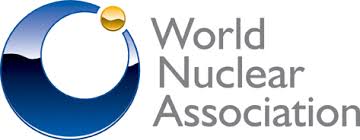Nuclear Reactors 607 - Volatility in Uranium Prices
I have blogged before about the volatility in the price of uranium on the global market. Currently the price is very low but it has been climbing because of production cuts at mines, cancelled mining projects and interest from investors in commodities. The price has rising thirty percent since April. Industry analysts say that uranium is poised to rise in price even more after a variety of problems have depressed the price for the past ten years. One big factor is China’s dedication to nuclear power as a solution to pollution and climate change.
Nick Stansbury is a fund manager at Legal & General Investment Management. He said, “In the parts of the world, which face growing demand for clean energy such as China, nuclear power is going to be really important.”
On the other hand, some analysts point to recent problems that have depressed prices and say that investors should be cautious. They say that there are high inventories of uranium and renewables are providing serious competition for nuclear power.
The World Nuclear Association (WNA) is an international organization that promotes nuclear power and provides support for companies involved in the global nuclear industry. The three-day WNA Symposium is starting today in London, U.K. This Symposium is touted as being the “premier annual event” for the global nuclear industry.
Two of the major topics expected to be discussed at the Symposium are the recent cuts in uranium supply and the recent activities of Kazatomprom, the Kazakhstan company which is the biggest producer of uranium in the world today. Spot markets are commodities exchanges where contracts are cut for immediate delivery of commodities.
Colin Hamilton is manager director of commodities research at BMO Capital Markets in London. He said, “In our view, this will result in debates over how much of the currently excessive inventory levels are actually available to the market. We still see inventories as an overhang for uranium, but the recent market events do now mean that the supply side of the industry is starting to address the issues which have led to consistent inventory build over the past decade.”
Spot markets are commodities exchanges where contracts are cut for immediate delivery of commodities. The price of uranium on the spot market in April was about twenty dollars a pound. This week, it is twenty-six dollars and forty five cents a pound. The main cause of this increase has been the reduction in supply. Kazatomprom has lowered its output. Cameco in Canada and Paladin Resources in Australia have both stopped operation. It is estimated that the output from uranium mines will drop from one hundred sixty five million pounds per year in 2016 to one hundred and forty million pounds this year.
. Recently, Kazatomprom bypassed the uranium spot market and will sell a quarter of its annual production to Yellow Cake, which is a London investment vehicle. YC intends to buy and store a large quantity of uranium in anticipation of a major increase in the price of uranium. YC has an option to buy another one hundred million dollars worth of uranium from Kazatomprom for the next nine year.
Even with the Kazatomprom actions and plans, it will still take a long time to consume the stockpiles of uranium that have been accumulated during the past ten years. In 2009, there was about six hundred million pounds of uranium in inventory around the world. By 2018, those stockpiles had increased by to almost eight hundred million pounds.
Long-term contracts from utilities for uranium have helped keep struggling uranium suppliers in business but many of those long-term contracts will expire in the near future. Analysists believe that the utilities will be eager to sign new supply contracts as quickly as possible to insure stable supply and to lock in a price. Unless prices are locked in for the long term, supply dynamics suggest that prices could drop to even lower than recent record low prices which could result in more mine closures or production cutbacks.
